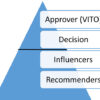Cold calling is a crucial skill for Business Development Representatives (BDRs). It can open doors to new opportunities, build relationships, and ultimately drive sales. However, the first few seconds of a call can make or break the interaction. By adopting a strategic approach, BDRs can significantly improve their cold calling effectiveness. Here’s a comprehensive guide on how to make every cold call count.
1. Importance of the First 10 Seconds
Action: Start with an engaging, customer-centric opening line. Example:
Alex: Hi, is this Maria?
Maria: Uh, yeah.
Alex: Hi Maria, we haven’t had a chance to meet yet, but I just saw that you guys are hosting a webinar. My name is Alex. I’m calling from XYZ Corp. You and I had actually talked about six months ago when you had started in the role. Normally, when I’m talking to people who have been in the role for six months, they’re focused at this point on one of two things. What are you focused on right now?
Explanation: Instead of introducing himself and the company first, Alex starts by mentioning something relevant to the prospect, making it more engaging.
2. Customer-Centric Approach
Action: Mention a recent event or achievement relevant to the customer. Example:
Alex: I just saw that you guys are hosting a webinar. My name is Alex. I’m calling from XYZ Corp. You and I had actually talked about six months ago when you had started in the role.
Explanation: Alex makes the conversation about the prospect’s activities and past interactions, demonstrating a customer-centric approach.
3. Avoid Double Declarations
Action: Refrain from starting the call with your name and company. Example:
Alex: Hi, is this Maria?
Maria: Uh, yeah.
Alex: Hi Maria, we haven’t had a chance to meet yet, but I just saw that you guys are hosting a webinar.
Explanation: Alex avoids the double declaration by not starting with his name and company, but instead, mentions something relevant to the prospect.
4. Utilize Past Interactions
Action: Reference previous conversations or interactions. Example:
Alex: You and I had actually talked about six months ago when you had started in the role.
Explanation: Alex references a past conversation, adding credibility and context to the current call.
5. Balanced Questioning and Statements
Action: Use open-ended questions to engage the prospect. Example:
Alex: Normally, when I’m talking to people who have been in the role for six months, they’re focused at this point on one of two things. What are you focused on right now?
Explanation: This approach invites the prospect to share more, making the conversation more interactive.
6. Handling Objections with Empathy and Curiosity
Action: Acknowledge objections genuinely and ask follow-up questions. Example:
Alex: How many folks do you have on the team right now?
John: Um, a fair few. Um, probably around ten.
Alex: And are most of them in your London office?
John: Yes.
Alex: Do you have like a go-to few that when you’re trying to understand, um, the business, even in onboarding, that you go to?
Explanation: Alex acknowledges the prospect’s response and follows up with more questions, demonstrating genuine curiosity.
7. Effective Closing Techniques
Action: Close for a meeting in a way that shows you want to understand their needs better. Example:
Alex: Let me just ask you one question so I can make a note in my system here. Did you sign a one-year agreement with them or is it a multi-year agreement?
John: Um, it is a three-year agreement.
Alex: Thanks so much for this information. This is really helpful for me. Listen, here’s the story. I’ve got to do my job here. I’m going to send over an email with some additional information for you. Just take a look. I know you’re going back to the team to talk about some of the conversations we had internally. And if you have any questions, you know where to find me.
Explanation: Alex provides value by offering additional information and keeps the door open for further communication.
8. Establishing Urgency
Action: Use a specific scale to gauge urgency and interest. Example:
Alex: On a scale of one to four, what’s your appetite for change? But before you answer, let me explain what I mean here. One being, this is the last time you’ll probably ever answer a call from me. Four being, I’ll probably get an email back from you this afternoon asking for a meeting because you guys want to sign a contract and make a change right now. What’s your appetite for change?
John: Uh, three.
Alex: I’m out. That’s why I have a bad moment.
Explanation: Alex uses a specific scale to gauge urgency and interest, helping him decide the next steps.
9. Tone and Non-Verbal Cues
Action: Maintain a calm and positive tone. Example:
Alex: Well, listen, I’ll let you go here. Just one last question. On a scale of one to four, what’s your appetite for change?
Explanation: Alex maintains a positive tone, showing empathy and respect for the prospect’s time.
10. Adapting Based on Prospect’s Response
Action: Be ready to pivot your approach based on the prospect’s responses. Example:
Alex: How many folks do you have on the team right now?
John: Um, a fair few. Um, probably around ten.
Alex: And are most of them in your London office?
John: Yes.
Alex: Do you have like a go-to few that when you’re trying to understand, um, the business, even in onboarding, that you go to?
Explanation: Alex adjusts his questioning based on John’s responses, digging deeper to gather useful information.
11. Probing for Team Dynamics
Action: Ask about team size and structure instead of names. Example:
Alex: How many folks do you have on the team right now?
John: Um, a fair few. Um, probably around ten.
Alex: And are most of them in your London office?
Explanation: Alex asks about the team size and structure, avoiding direct requests for names.
12. Building Rapport Through Specific Questions
Action: Inquire about specific responsibilities or interests. Example:
Alex: Do you have like a go-to few that when you’re trying to understand, um, the business, even in onboarding, that you go to?
Explanation: Alex’s question shows genuine interest in the prospect’s internal processes.
13. Handling Reluctance for Team Details
Action: Focus on team size and roles instead of names. Example:
vbnet
Copy code
Alex: How many folks do you have on the team right now?
John: Um, a fair few. Um, probably around ten.
Alex: And are most of them in your London office?
Explanation: Alex avoids directly asking for names, focusing on team size and location instead.
14. Using a Scale for Appetite for Change
Action: Gauge the prospect’s interest with a specific scale. Example:
Alex: On a scale of one to four, what’s your appetite for change? But before you answer, let me explain what I mean here. One being, this is the last time you’ll probably ever answer a call from me. Four being, I’ll probably get an email back from you this afternoon asking for a meeting because you guys want to sign a contract and make a change right now. What’s your appetite for change?
John: Uh, three.
Explanation: Alex uses a scale to gauge the prospect’s interest, helping determine the next steps effectively.
15. Leveraging Event-Specific Strategies
Action: Ask detailed questions about the prospect’s speaking engagement or event participation. Example:
Alex: What are you, you’re talking about AI, you know, what is the session on? Why is that a topic that’s interesting to you? What have you done around this? Are you speaking by yourself or are you speaking with somebody else? Are you speaking with, um, another member of your team or are you speaking with, uh, someone that you previously worked with?
Explanation: Alex asks detailed questions about the prospect’s speaking engagement, creating a more personalized conversation.
16. Follow-Up Techniques
Action: Send a calendar invite immediately and confirm acceptance. Example:
Alex: I’m going to send over an email with some additional information for you. Just take a look. I know you’re going back to the team to talk about some of the conversations we had internally. And if you have any questions, you know where to find me.
Explanation: Alex ensures a follow-up by sending an email immediately and confirming the prospect will review it.
17. Maintaining Energy and Positivity
Action: Keep a positive and energetic tone throughout the call. Example:
Alex: Well, listen, I’ll let you go here. Just one last question. On a scale of one to four, what’s your appetite for change?
Explanation: Alex maintains a positive tone, leaving a good impression on the prospect.
By implementing these detailed, action-oriented strategies, BDRs can significantly enhance the effectiveness of their cold calls. This approach helps make conversations more engaging, customer-centric, and informative. Focusing on building rapport, asking














